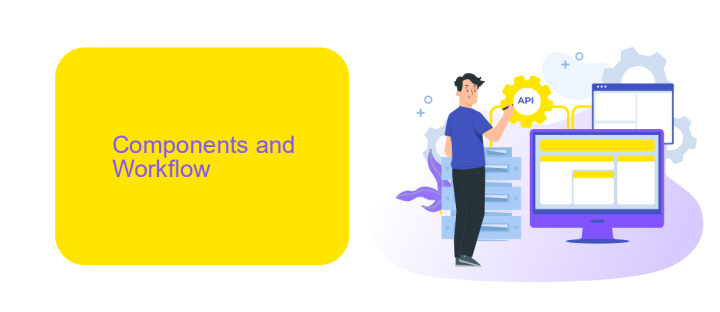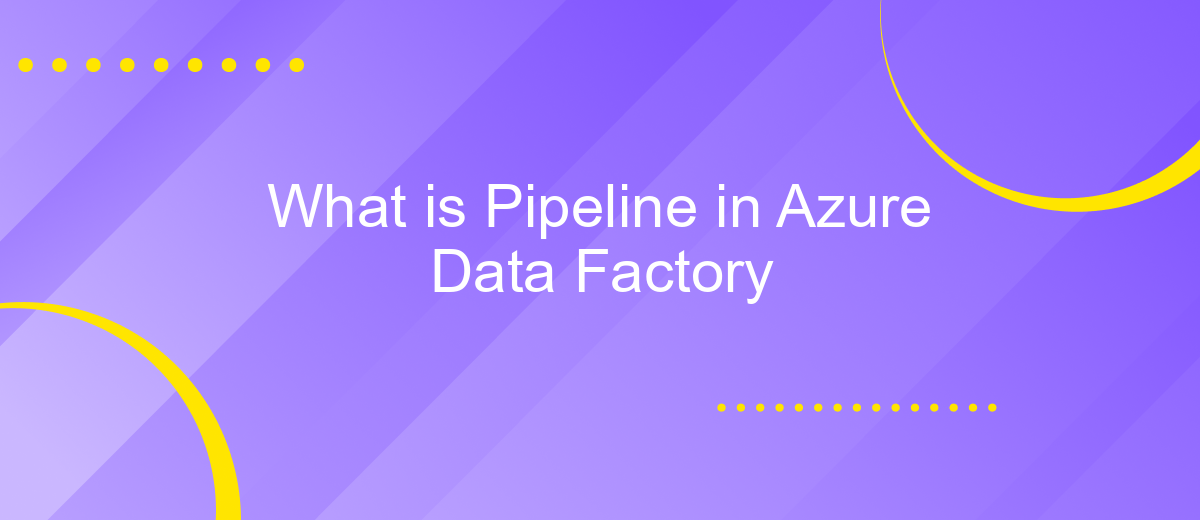What is Pipeline in Azure Data Factory
Azure Data Factory (ADF) is a cloud-based data integration service that orchestrates and automates data movement and transformation. At the heart of ADF lies the concept of a pipeline, a logical grouping of activities that together perform a task. Understanding pipelines is crucial for efficiently managing and executing workflows in Azure Data Factory, enabling seamless data processes.
Overview
Azure Data Factory (ADF) is a cloud-based data integration service that allows you to create data-driven workflows for orchestrating and automating data movement and data transformation. A pipeline in ADF is a logical grouping of activities that together perform a task. It is a key component of ADF, enabling you to manage and monitor data workflows effectively.
- Data Movement: Transfer data between different storage systems.
- Data Transformation: Convert data into a desired format.
- Scheduling: Automate the execution of pipelines based on time or event triggers.
- Monitoring: Track the execution and performance of data workflows.
With the integration capabilities of services like ApiX-Drive, you can easily connect Azure Data Factory with various applications and platforms, enhancing your data workflows. ApiX-Drive simplifies the process of setting up integrations, allowing you to automate data transfers and transformations without extensive coding. This ensures seamless data flow and comprehensive monitoring, making data management more efficient and effective.
Components and Workflow

Azure Data Factory pipeline is a logical grouping of activities that together perform a task. Each activity in a pipeline can be managed independently, but they can also be connected to form a comprehensive workflow. This allows for complex data operations to be broken down into simpler, manageable steps. Activities within a pipeline can range from data movement to data transformation, and can be scheduled to run at specific times or triggered by specific events.
Components of a pipeline include datasets, linked services, and activities. Datasets represent data structures within data stores, linked services define connections to data sources, and activities specify the actions to be performed on the data. For seamless integration with various services, tools like ApiX-Drive can be employed. ApiX-Drive facilitates the automation of data workflows by connecting different applications and services, ensuring that data moves smoothly and efficiently between systems. By leveraging these components and tools, Azure Data Factory pipelines enable robust and scalable data integration solutions.
Data Flow in Pipelines

Data Flow in Pipelines in Azure Data Factory allows for the transformation and movement of data across various sources and destinations. This capability is essential for creating efficient ETL (Extract, Transform, Load) processes, enabling businesses to clean, aggregate, and analyze data effectively.
- Define the data flow: Specify the source and destination data stores.
- Transform the data: Apply various transformations like filtering, mapping, and aggregating.
- Monitor and manage: Utilize monitoring tools to ensure data flows are running smoothly and efficiently.
For integrating multiple data sources seamlessly, services like ApiX-Drive can be invaluable. ApiX-Drive enables easy configuration and automation of data flows between different platforms, ensuring that data is consistently synchronized and up-to-date. By leveraging such tools, businesses can enhance their data integration workflows, making them more robust and reliable.
Benefits and Use Cases

Azure Data Factory pipelines offer a streamlined approach to data integration and transformation. By automating workflows, organizations can save time and reduce the risk of manual errors. This not only enhances productivity but also ensures data consistency across various sources.
Another significant advantage is the scalability that Azure Data Factory provides. Whether you are dealing with small datasets or petabytes of information, pipelines can handle it efficiently. This makes it a versatile tool for businesses of all sizes.
- Automated data workflows
- Scalability for large datasets
- Data consistency and reliability
- Integration with multiple data sources
- Cost-effective data management
In addition to these benefits, Azure Data Factory integrates seamlessly with other Azure services and third-party tools like ApiX-Drive. This allows for more flexible and robust data integration solutions, making it easier to connect various applications and automate data flows without extensive coding.
Best Practices and Limitations
When designing pipelines in Azure Data Factory, it is crucial to follow best practices to ensure efficiency and reliability. Always modularize your pipelines by breaking them into smaller, reusable components. This approach simplifies debugging and maintenance. Additionally, implement proper logging and monitoring to track pipeline performance and detect issues early. Make use of Azure’s built-in monitoring tools and consider integrating third-party services like ApiX-Drive for enhanced data integration capabilities.
Despite its robust features, Azure Data Factory has some limitations. For instance, there can be latency issues when dealing with large volumes of data. To mitigate this, ensure your data is partitioned effectively. Additionally, while Azure Data Factory supports a wide range of data sources, some niche or legacy systems might require custom solutions or third-party integrations like ApiX-Drive. Always test your pipelines thoroughly in a development environment before deploying them to production to avoid unexpected failures.


FAQ
What is a pipeline in Azure Data Factory?
What are the key components of an Azure Data Factory pipeline?
How do you schedule a pipeline in Azure Data Factory?
Can you integrate Azure Data Factory with other services for automation?
How do you monitor and manage pipelines in Azure Data Factory?
Apix-Drive will help optimize business processes, save you from a lot of routine tasks and unnecessary costs for automation, attracting additional specialists. Try setting up a free test connection with ApiX-Drive and see for yourself. Now you have to think about where to invest the freed time and money!

